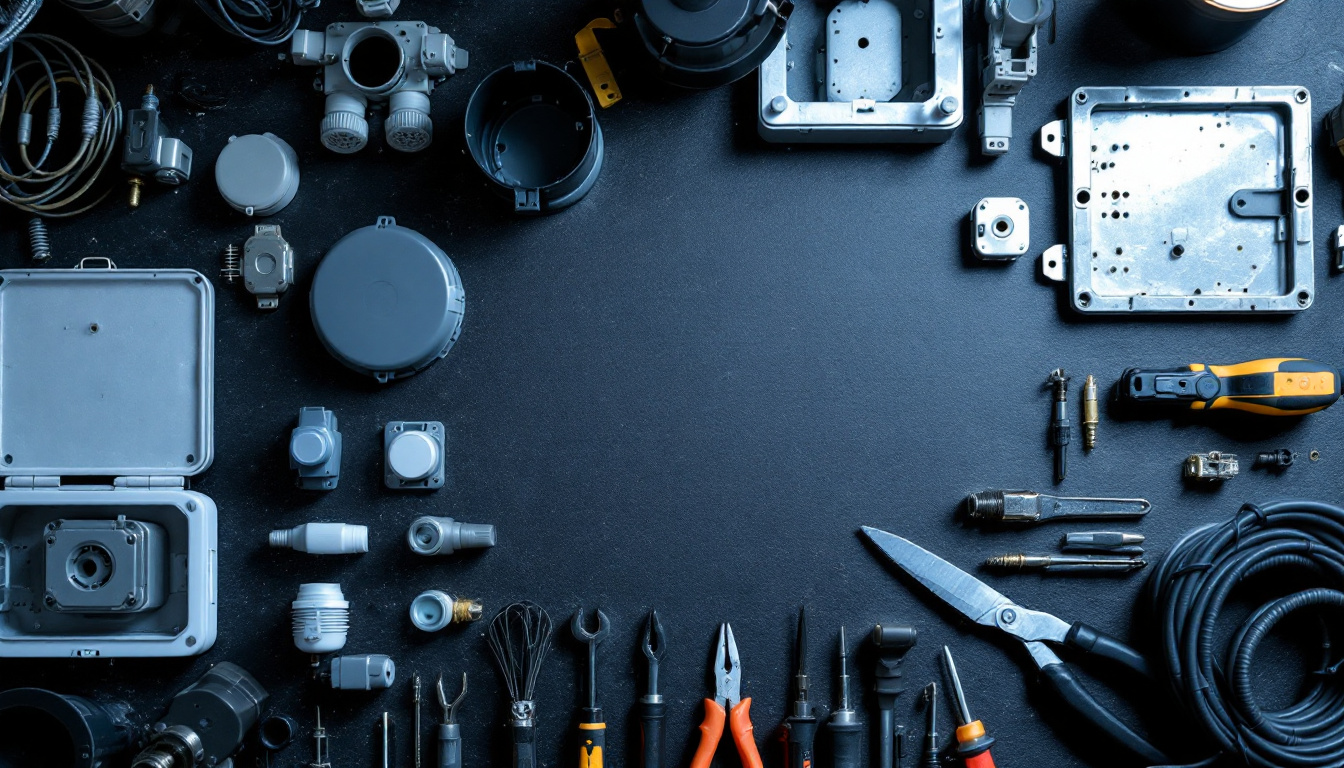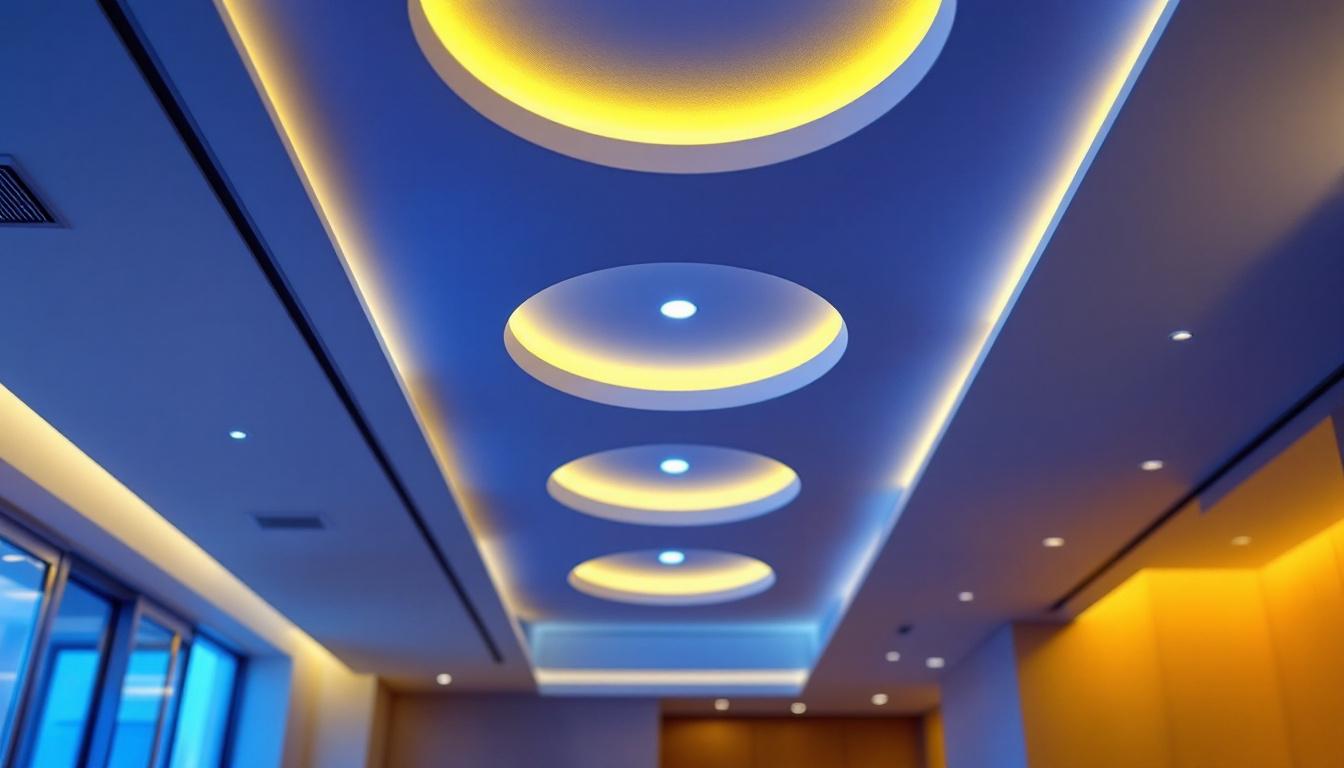
For lighting contractors, understanding the intricacies of junction boxes and their covers is essential for ensuring safe and efficient installations. This comprehensive guide delves into the various aspects of junction boxes, including their types, installation techniques, and best practices for maintenance. By mastering these elements, contractors can enhance their skills and deliver top-notch service to their clients.
Junction boxes serve as critical components in electrical systems, providing a safe enclosure for wire connections. They protect electrical connections from damage and reduce the risk of short circuits, making them indispensable in lighting installations. By ensuring that wires are properly housed and insulated, junction boxes contribute significantly to the overall safety and efficiency of electrical systems. Their role is not only functional but also essential for compliance with electrical codes and standards, which mandate the use of junction boxes in various applications.
There are several types of junction boxes available, each designed for specific applications. The most common types include:
When selecting a junction box, several features should be considered:
Additionally, junction boxes may come equipped with features such as built-in cable clamps or strain reliefs, which help to secure the wires and prevent them from being pulled out unintentionally. This is particularly beneficial in high-traffic areas where wires may be subject to movement or stress. Furthermore, some junction boxes are designed with fire-resistant materials, adding an extra layer of safety in environments where fire hazards are a concern. The choice of junction box can greatly influence not only the safety and functionality of an electrical installation but also the ease of future maintenance and modifications.
Proper installation of junction boxes is vital for safety and functionality. Following established techniques can prevent future issues and ensure compliance with electrical codes.
Before beginning the installation process, it is essential to gather all necessary tools and materials. This includes the junction box, wire connectors, screws, and a drill. Additionally, reviewing local electrical codes will ensure compliance and safety. It’s also wise to have a voltage tester on hand to verify that the power is off before starting any electrical work. Familiarizing yourself with the specific requirements for the type of junction box you are using—whether it’s a metal or plastic box—can also aid in a smoother installation process.
1. **Select the Location:** Choose a location that is easily accessible for future maintenance. Ensure the area is free from moisture and other hazards. Consider the proximity to existing wiring and the overall layout of your electrical system to minimize the length of wire runs and potential voltage drops.
2. **Cut the Opening:** If the junction box is to be recessed, use a drywall saw to cut an opening that matches the dimensions of the box. For surface-mounted boxes, mark the mounting points. It’s beneficial to double-check the dimensions of the box against your cut to avoid any unnecessary adjustments later on.
3. **Secure the Box:** Use screws to secure the junction box in place. Ensure it is level and firmly attached to the structure. Depending on the type of wall or ceiling, you may need to use anchors or toggle bolts for added stability, especially in drywall or hollow materials.
4. **Connect the Wires:** Strip the insulation from the wires and connect them using appropriate wire connectors. Ensure that connections are tight and secure. It’s crucial to match the wire colors correctly—black to black, white to white, and green or bare wire to the ground. Using a wire nut can help ensure a solid connection, but be sure to twist it tightly and check for any exposed wire.
5. **Install the Cover:** Once all connections are made, install the cover to protect the junction box and its contents. This step not only enhances safety but also contributes to a neat appearance. If the junction box is located in a high-traffic area, consider using a cover that is tamper-proof to prevent accidental disconnections or exposure to live wires.
6. **Test the Installation:** After everything is secured and covered, restore power to the circuit and test the installation with a voltage tester. This final check is essential to ensure that all connections are functioning correctly and that there are no shorts or issues that could lead to electrical hazards in the future. If everything checks out, you can be confident that your junction box is safely installed and ready for use.
Regular maintenance of junction boxes is crucial for ensuring their longevity and functionality. Implementing best practices can help prevent issues that may arise over time.
Conducting routine inspections of junction boxes can help identify potential problems before they escalate. Look for signs of wear, corrosion, or loose connections. Any issues should be addressed promptly to maintain safety.
Keeping junction boxes clean is essential for optimal performance. Dust and debris can accumulate over time, potentially leading to overheating or electrical failures. Use a damp cloth to wipe down the exterior and ensure that the area around the box is clear of obstructions.
Safety is paramount when working with electrical systems. Understanding the risks associated with junction boxes and implementing safety measures can prevent accidents and injuries.
When installing or maintaining junction boxes, wearing appropriate personal protective equipment is essential. This includes gloves, safety glasses, and insulated tools. PPE helps protect against electrical shocks and other hazards.
Familiarity with local electrical codes is crucial for ensuring compliance during installations. These codes dictate the requirements for junction box installation, including placement, size, and wiring methods. Adhering to these regulations not only ensures safety but also protects contractors from liability.
Even with careful installation and maintenance, issues can arise with junction boxes. Understanding common problems and their solutions can save time and resources.
Loose wire connections can lead to intermittent power issues or even electrical fires. If a junction box is experiencing problems, check all connections to ensure they are tight and secure. Reconnect any loose wires and use wire nuts to secure them properly.
Moisture can be a significant issue, especially in outdoor installations. If a junction box shows signs of moisture, it may need to be replaced or relocated. Ensure that weatherproof boxes are used in outdoor settings and that all seals are intact.
The cover of a junction box plays a vital role in protecting the internal components from dust, moisture, and physical damage. Selecting the right cover is essential for maintaining the integrity of the electrical system.
Just as there are various types of junction boxes, there are also different covers available:
When selecting a cover for a junction box, consider the following factors:
The electrical industry is continually evolving, and junction boxes are no exception. Innovations in technology have led to improved designs and features that enhance functionality and safety.
With the rise of smart home technology, smart junction boxes have emerged, allowing for remote monitoring and control of electrical systems. These boxes can provide real-time data on energy usage and alert users to potential issues.
Some modern junction boxes come equipped with integrated circuit protection, which can prevent overloads and short circuits. This feature enhances safety and reduces the risk of electrical fires.
Understanding junction boxes and their covers is essential for lighting contractors aiming to deliver safe and efficient installations. By mastering the types, installation techniques, maintenance practices, and safety considerations, contractors can enhance their expertise and provide exceptional service to their clients.
As technology continues to evolve, staying informed about innovations in junction box design will further empower contractors to meet the demands of modern electrical systems. By prioritizing safety, compliance, and quality, lighting contractors can build a reputation for excellence in their field.
Ready to elevate your lighting installations with the highest quality junction boxes and covers? Look no further than LumenWholesale. Our extensive selection of spec-grade lighting products is designed to meet the rigorous demands of modern electrical systems, all at unbeatable wholesale prices. Say goodbye to middleman markups and hello to superior lighting that doesn’t break the bank. Plus, with free shipping on bulk orders, you can stock up on all your lighting needs without worrying about hidden fees. Don’t compromise on quality or value—choose LumenWholesale for Wholesale Lighting at the Best Value and make your next project shine.

Discover how Slipry is revolutionizing the lighting industry and impacting contractors’ profit margins.

Explore the advantages and challenges of lumen brightness in lighting projects.

Discover the transformative impact of ceiling recessed lighting in modern installations.

Discover how Ed Lighting revolutionizes project efficiency with innovative solutions and cutting-edge technology.